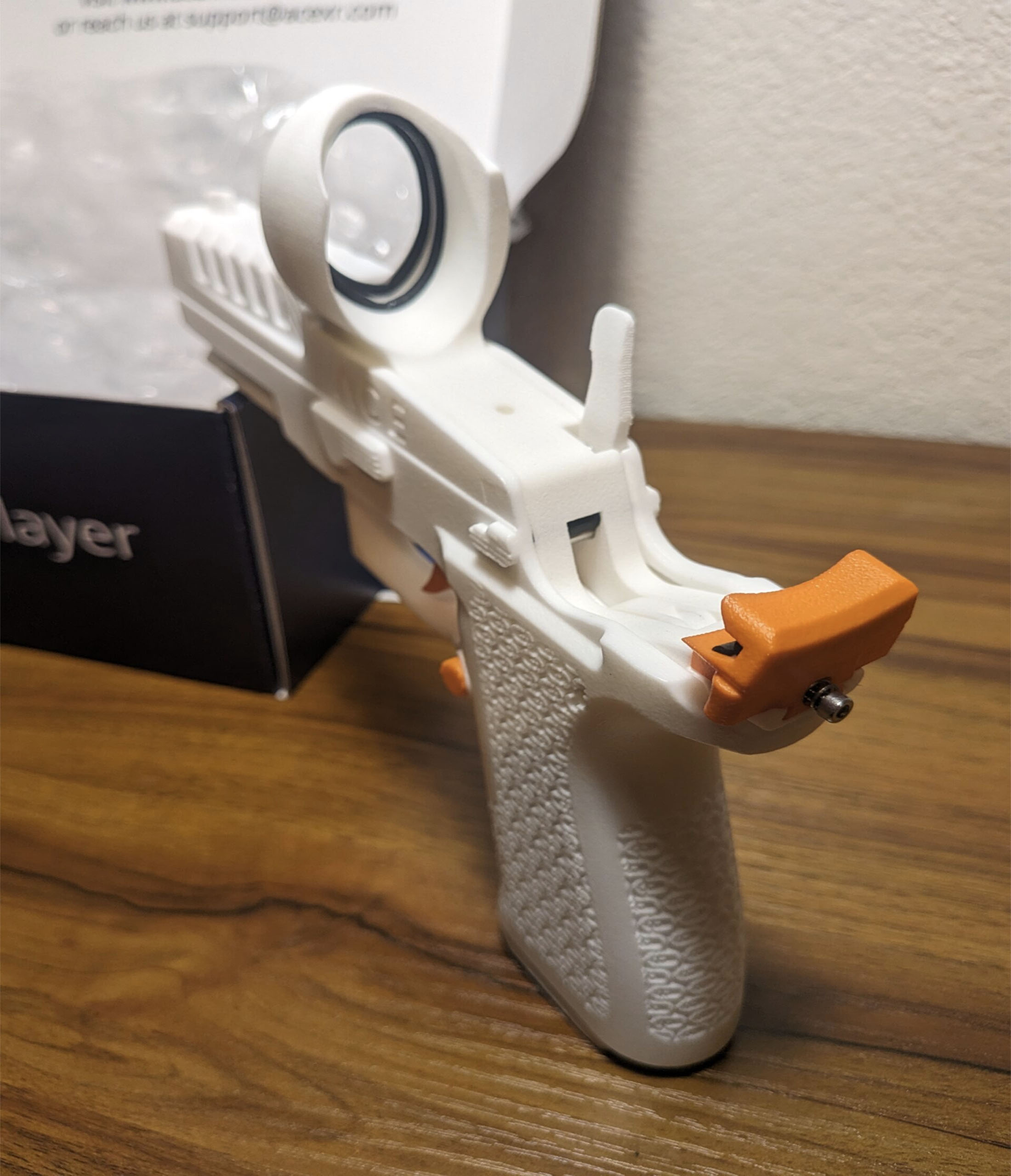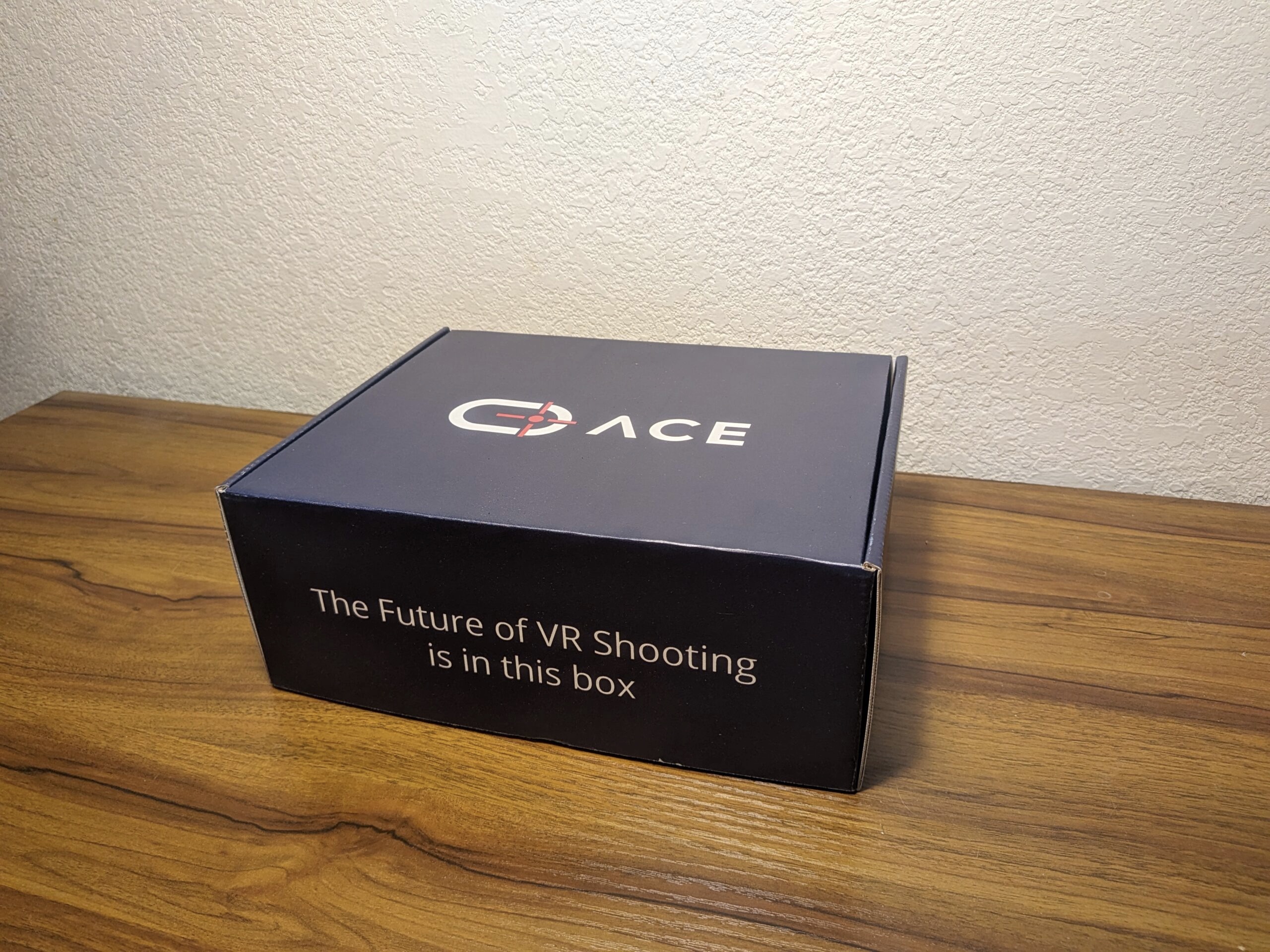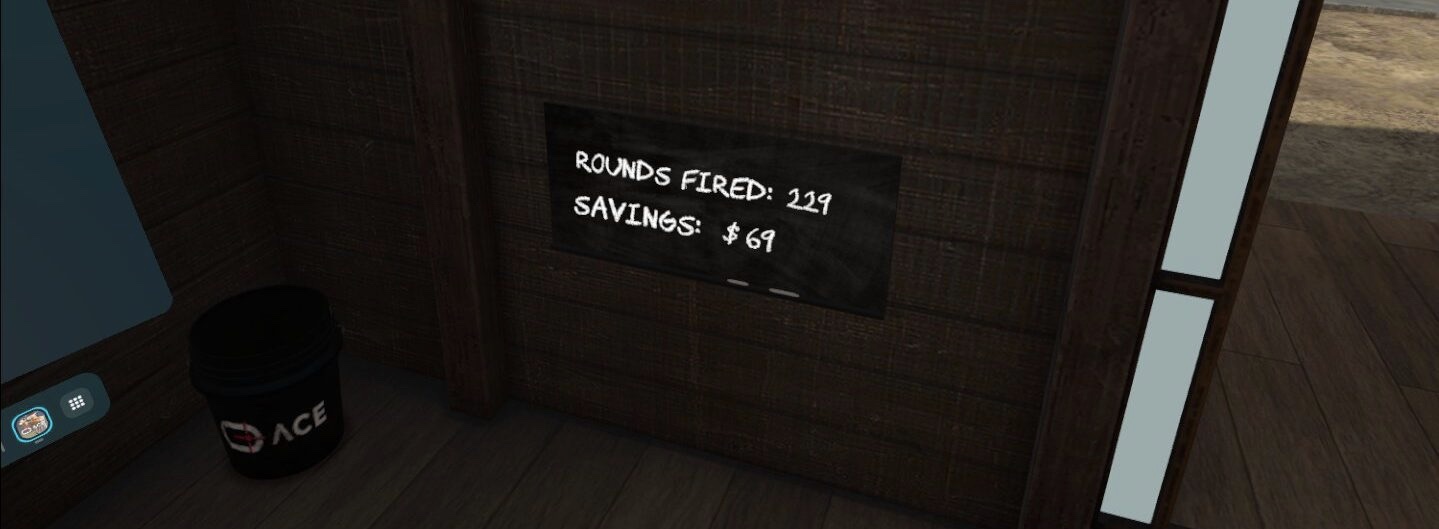
I’ve written about the state of consumer VR technology and how it was just a little shy of being useful for firearms training. What I didn’t know at the time was that there was a company working in the background to solve some of the biggest problems I had identified: a realistic controller and an app aimed at improving real-world shooting skills.
The biggest problem with consumer VR headsets so far has been that the controllers are made to stand in for thousands of different things. They’re supposed to be useful to simulate hands (assuming you don’t have hand tracking enabled), tools, rockets, and anything else app developers think would be useful. But, the like all video game controller trigger buttons, they have a soft, spongy feel to them with not much resistance. Not al all like an actual trigger…no wall, no break, and no reset.
That’s a real shame because the rest of the environment in shooting games is generally really good. With 3D vision that moves as you move your head, aiming is realistic, moving is realistic, and the physics are pretty decent, too. Instead of toggling joysticks and pressing buttons in front of a 2D screen, you actually move your body and use your eyes almost exactly as you would in meatspace.
So when I came across Ace XR, a company working to bridge the VR gun realism gap, I was pretty excited. Not only were they working on improving their VR training app, but they also had been developing a new “handset” that converts a general purpose VR controller into a realistic-feeling pistol. I wasn’t aware of the first version of the pistol (someone has a video here), but improvements and simplifications have been made since version 1.0.
Here’s the current V2 version of the Ace Arctus handset with my Meta Quest 2 controller docked:

As you can see, the controller is almost completely backwards when inserted into the handset. But, the software knows to expect this and adjusts the app accordingly. The trigger activates a mechanism that first half-presses the controller’s trigger button and then goes further once the trigger “breaks.”

When you press the magazine release, a magazine doesn’t release from the handset like the old version does, but it uses a little paddle to push the controller’s grip button (typically pushed by the user’s middle finger).
These two functions — a realistic self-resetting trigger and a magazine release — when combined with a realistic pistol shape and weight, make for something that actually feels like a pistol in your hands.
Software First Impressions
I’ve only done about an hour’s worth of testing so far, but I’m impressed. Here’s what a typical shooter joining AceXR can expect when getting started.
AceXR operates on a membership model. You pay $19/month for access to the software, and you pay for the first year up front. This may sound steep ($228), but the handset is included in your membership. According to the company’s marketing people, they don’t take the handset back if you don’t renew after the year, and they’ll let you still use a basic version of the software after expiration.
When you consider what other quality training pistols like the SIRT cost (I paid over $300 for my SIRT 107), that isn’t bad at all.
Once you’re signed up, you pay just under $20 for shipping and they send you the handset. I got a coupon code from the company to get free membership, but I had to pay for shipping and go through the same order process as any other user. The handset arrived in five days.
When I got the box and opened the cardboard shipping box, I found this inside . . .

When I opened that, I found a lot more than just the handset. It’s a nice welcome kit with a note thanking you for signing up, instructions for putting a Quest 2 or Quest 3 controller in the handset, and more.

With the controller clicked in and my Quest 2 fired up, I found that I really needed my left controller to get around the initial Oculus environment. My avatar’s right wrist looked like it had been dislocated rather painfully as I held the handset that put the right hand controller backwards, but the left virtual hand and pointer worked fine to launch the app. If the disconcerting feeling of watching what appears to be your wrist being contorted is bothersome, you can hold the gun backwards temporarily to make it more pleasant.
Once I was in the AceXR app, I was able to choose my controller (V2) and everything went right again with the pointer and the gun. I ran through a quick tutorial, and then the app put me in the “hut,” a little building at the back of the shooting range. The hut has a workbench, two screens to select range modes and change settings, and a place to keep weapons as you collect them. You start out with a double-stack 1911 with irons, but can later get other guns and optics.
I started with a basic sight alignment drill . . .
It only has two basic drills for beginners, so people just starting out with firearms will still need to get some basic instruction to get started. You can work on your fundamentals here once you’ve learned them.

I noticed two problems right away, but found solutions. One issue was that the software was way too sensitive, and would fire the gun before the handset’s trigger broke. Back in the hut, I found a setting to change the sensitivity and resolve the problem entirely. Another issue I had was that the left controller kept getting selected instead of the one in the handset. Setting that controller down during app use fixed that.
With those two issues resolved, I did some free play on a very well-stocked range. That went very well. There’s no recoil in this version of the handset, but the trigger feels right and everything else is right in the VR environment. Real skills translate in here and back out to the real world.
I wouldn’t really call it dry fire practice, though. While VR has things in common with dry fire, your ability to practice other skills makes this a lot more useful than garden variety dry fire. AceXR is more of a skill-building tool where you have to get everything but recoil management right to score hits.
On the way back out of the “hut,” I noticed that AceXR wanted to let me know that the whole system would soon pay for itself, and would continue to be a good investment for years to come.

I did the math on this to see how long it would take a person new to both VR and AceXR to break even. The last-generation Quest 2 headset can be had for as little as $250 new right now (normal price is $300). The AceXR membership is $228, and shipping was $20. So, at full price, that puts the whole system at $498 or $548. That’s about seven to eight range sessions done in VR versus at the real range.
But cost savings aside, the system allows for some serious skill-building from home. By doing this a few times a week and going to the real range every two to four weeks, you could get good a lot faster than you would by just dry-firing and then hitting the range. Plus, you can play other gun games in VR to practice actual fighting skills, if that’s your thing. Given that it all costs less than one high-quality pistol, I think that’s a good value.

